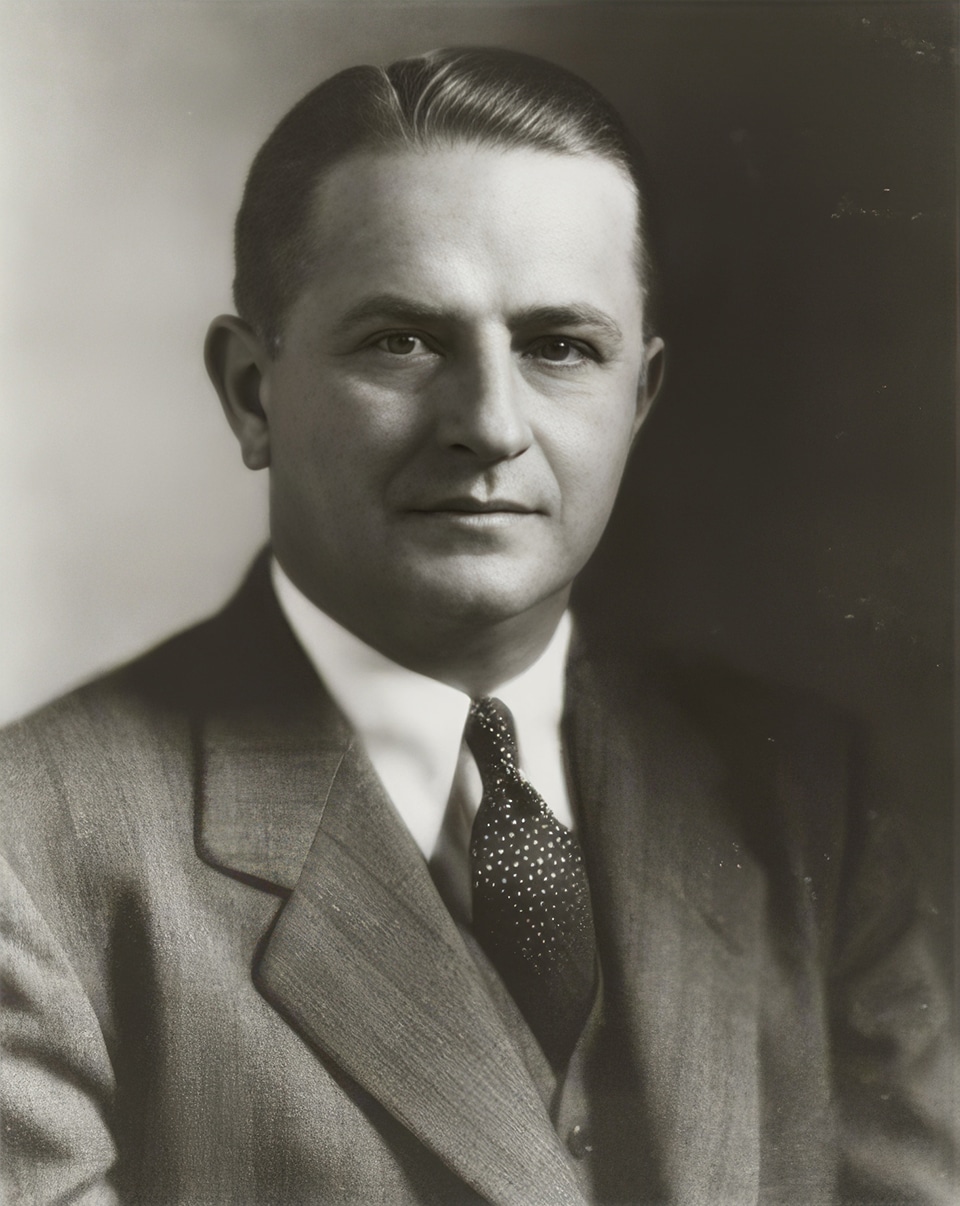RESOURCES
PEOPLE
Sen. Garland Gray
1901-1977
Garland “Peck” Gray was born in the rural community of Gray, in Sussex County, Virginia, to Elmon Lee Gray and Ella Virginia Darden Gray. His grandfather, Alfred L. Gray, had migrated from Sussex County, Delaware, and established the Gray Lumber Company to exploit the region’s abundant swamp pines. Over time, the Gray family accumulated over 100,000 acres of forest across Prince George, Surry, Sussex, and Southampton Counties and owned several historic James River plantations including Bacon’s Castle, Swann’s Point, and Eastover.
Gray graduated from Waverly High School at age 16, earned a history degree from the University of Richmond in 1921, and completed a master’s in Southern history at Washington and Lee University in 1922. He began public service on the Sussex County school board (1925–1928), followed by the Public Welfare Board (1934–1940) and the Virginia State Ports Authority, where he became chairman in 1939. His cousin, “Red” Gray, also served in the Virginia legislature and was a past president of the national Ruritan Club.
In 1941, Gray was elected to the Virginia State Senate representing the 6th District. He briefly stepped down during World War II due to family obligations, including a major forest fire during his mother’s funeral, but returned to politics with increased stature. He became a key lieutenant in Senator Harry F. Byrd Sr.’s powerful political machine, the Byrd Organization, and co-chaired Byrd’s re-election campaign in 1945. Gray was a delegate to the Democratic National Conventions in 1944 and 1948.
Despite his family’s northern roots, Gray’s racial views reflected the white supremacist ideology prevalent in Southside Virginia. In 1925, a Black employee at his lumber mill, James Jordan, was lynched in Waverly, an event emblematic of the violent racial order Gray later worked to maintain. In 1948, he was appointed to a state history commission that adopted school textbooks espousing the Lost Cause narrative of the Civil War.
Following the 1954 Brown v. Board of Education decision, Gray emerged as a principal architect of Virginia’s Massive Resistance. One month after the ruling, he led a group of Virginia legislators calling for defiance and hosted monthly strategy sessions in a Petersburg firehouse. Appointed chair of the Gray Commission, he drafted a 1955 report that proposed eliminating compulsory school attendance and introduced a tuition grant system to allow white families to send children to private, segregated academies.
Gray then introduced legislation mandating the closure of any school that integrated, even under federal court order. He also influenced local education policy—pressuring the Sussex County school board to fire teachers who supported integration, while his relative Frances Stringfellow Gray helped found Tidewater Academy as a segregation academy in 1964.
Gray’s extremism on race eventually isolated him. Although he was Byrd’s initial favorite for governor in 1957, the Byrd Organization balked at his candidacy, and Gray withdrew in favor of J. Lindsay Almond Jr., who was elected that fall. As court orders forced desegregation in Arlington and Norfolk in early 1959, Governor Almond allowed the schools to reopen, signaling the beginning of the end for Massive Resistance—despite Gray’s continued opposition. Garland Gray remained in the Senate until 1971, succeeded by his son, Elmon T. Gray.
